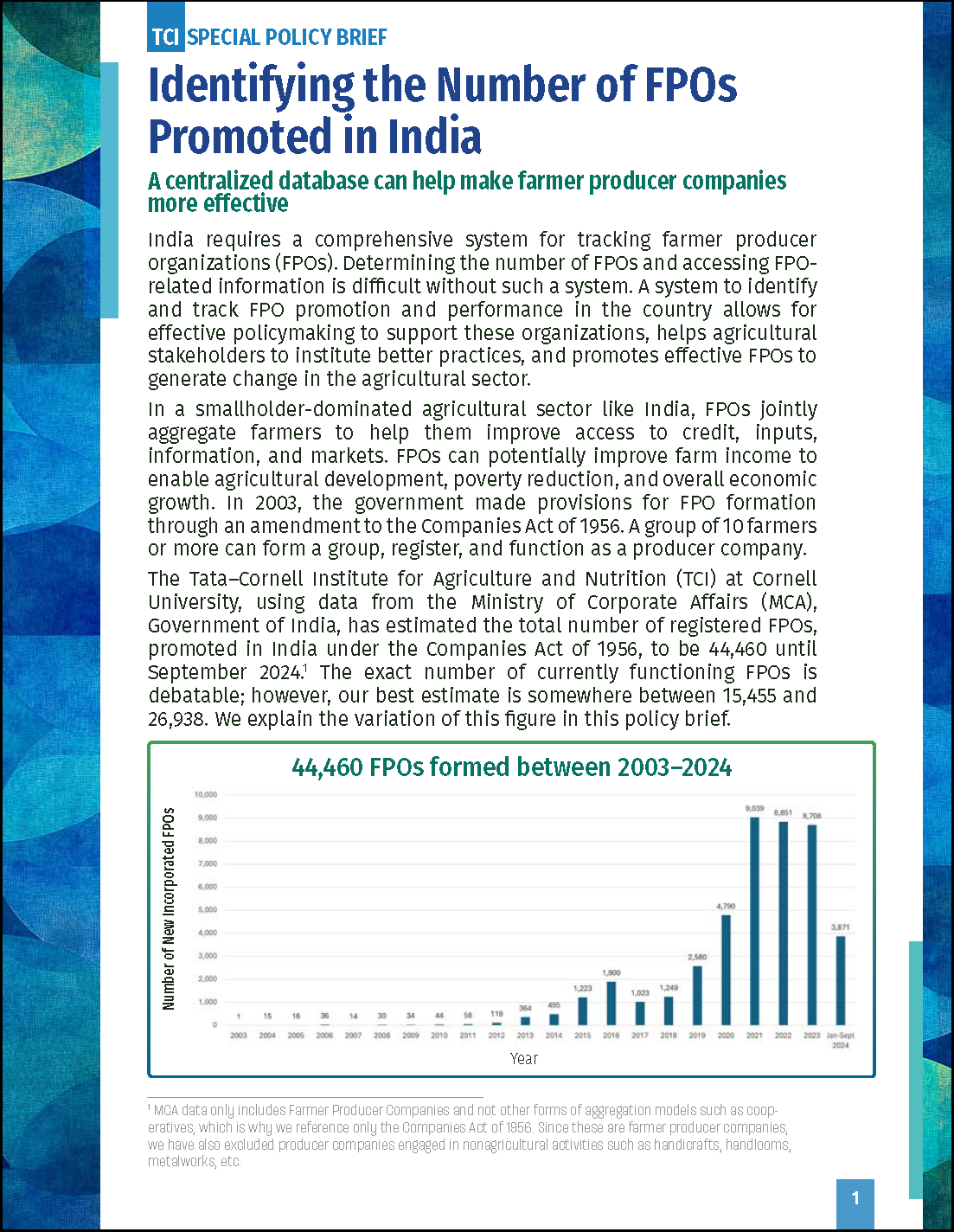Identifying the Number of FPOs Promoted in India
 This special policy brief provides an estimate of the number of active farmer producer organizations (FPOs) promoted in India from 2003 to 2024 and makes the case for a centralized system for tracking FPOs. A system to identify and track FPO promotion and performance in the country allows for effective policymaking to support these organizations, helps agricultural stakeholders to institute better practices, and promotes effective FPOs to generate change in the agricultural sector.
This special policy brief provides an estimate of the number of active farmer producer organizations (FPOs) promoted in India from 2003 to 2024 and makes the case for a centralized system for tracking FPOs. A system to identify and track FPO promotion and performance in the country allows for effective policymaking to support these organizations, helps agricultural stakeholders to institute better practices, and promotes effective FPOs to generate change in the agricultural sector.
Download the policy brief (PDF)
Essential data on Indian FPOs is missing
Using data from the Government of India’s Ministry of Corporate Affairs (MCA), TCI estimates that 44,460 FPOs have been formed between 2003 and September 2024. However, the number of currently functioning FPOs is less clear. MCA data shows 26,938 active and compliant FPOs, but only 57% (15,455) had submitted their financial documents in 2023, as required by law.
While the MCA collects financial and governance-related information on FPOs, other information is difficult to come by, including what services FPOs provide, what crops they grow, what market linkages they have achieved, and their gender composition. Information about implementing agencies and other organizations that promote FPOs is similarly difficult to obtain.
A centralized tracking system for FPOs would make this information more accessible to researchers, policymakers, and other stakeholders. Understanding the essential characteristics of FPOs and how they are promoted can help enable better promotion of FPOs in India.
FPO-Led Small Farm Market Access Models
This policy brief was published as part of TCI’s project on FPO-Led Small Farm Market Access Models. FPOs allow smallholder farmers to jointly aggregate to improve their access to credit, inputs, information, and markets, potentially improving farmer income and furthering agricultural development. The project aims to create lessons, tools, and resource pathways to strengthen small farm aggregators, while simultaneously catalyzing a community of practice of funders, implementers, and policy stakeholders.

